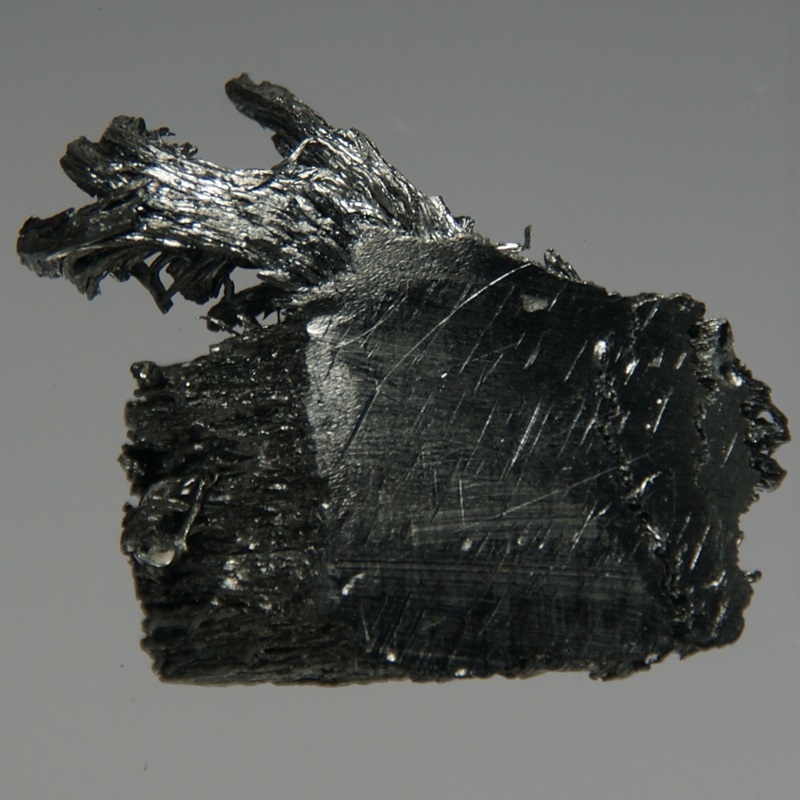Thulium
69
Tm
Group
n/a
Period
6
Block
f
Protons
Electrons
Neutrons
69
69
100
General Properties
Atomic Number
69
Atomic Weight
168.93421
Mass Number
169
Category
Lanthanides
Color
Silver
Radioactive
No
Named after Thule, the earliest name for Scandinavia
Crystal Structure
Simple Hexagonal
History
Thulium was discovered by Swedish chemist Per Teodor Cleve in 1879 by looking for impurities in the oxides of other rare earth elements.
The first researcher to obtain nearly pure thulium was Charles James, a British expatriate working on a large scale at New Hampshire College in Durham.
High-purity thulium oxide was first offered commercially in the late 1950s.
The first researcher to obtain nearly pure thulium was Charles James, a British expatriate working on a large scale at New Hampshire College in Durham.
High-purity thulium oxide was first offered commercially in the late 1950s.
Electrons per shell
2, 8, 18, 31, 8, 2
Electron Configuration
[Xe] 4f13 6s2
Thulium ore occurs most commonly in China
Physical Properties
Phase
Solid
Density
9.321 g/cm3
Melting Point
1818.15 K | 1545 °C | 2813 °F
Boiling Point
2223.15 K | 1950 °C | 3542 °F
Heat of Fusion
16.8 kJ/mol
Heat of Vaporization
250 kJ/mol
Specific Heat Capacity
0.16 J/g·K
Abundance in Earth's crust
0.000045%
Abundance in Universe
1×10-8%

CAS Number
7440-30-4
PubChem CID Number
23961
Atomic Properties
Atomic Radius
176 pm
Covalent Radius
190 pm
Electronegativity
1.25 (Pauling scale)
Ionization Potential
6.1843 eV
Atomic Volume
18.1 cm3/mol
Thermal Conductivity
0.168 W/cm·K
Oxidation States
2, 3
Applications
Thulium is used to dope yttrium aluminum garnets used in lasers.
It has also been used in high-temperature superconductors similarly to yttrium.
Thulium has use in ferrites, ceramic magnetic materials that are used in microwave equipment.
Thulium is used in euro banknotes for its blue fluorescence under UV light to defeat counterfeiters.
It has also been used in high-temperature superconductors similarly to yttrium.
Thulium has use in ferrites, ceramic magnetic materials that are used in microwave equipment.
Thulium is used in euro banknotes for its blue fluorescence under UV light to defeat counterfeiters.
Thulium is considered to be non-toxic
Isotopes
Stable Isotopes
169TmUnstable Isotopes
145Tm, 146Tm, 147Tm, 148Tm, 149Tm, 150Tm, 151Tm, 152Tm, 153Tm, 154Tm, 155Tm, 156Tm, 157Tm, 158Tm, 159Tm, 160Tm, 161Tm, 162Tm, 163Tm, 164Tm, 165Tm, 166Tm, 167Tm, 168Tm, 170Tm, 171Tm, 172Tm, 173Tm, 174Tm, 175Tm, 176Tm, 177Tm, 178Tm, 179Tm